Digital marketing has become a crucial component of success for real estate companies in today’s competitive market. By utilizing effective digital strategies, companies can reach their target audience more efficiently, generate leads, and ultimately drive sales. Let’s dive into the key aspects of understanding the digital marketing landscape for real estate, with real examples & proven strategies
A. The Importance of Digital Marketing in Real Estate:
Digital marketing offers numerous advantages over traditional marketing methods for real estate companies. According to recent research, 92% of buyers use the Internet as their primary resource when searching for properties. This statistic alone showcases the necessity of establishing a strong online presence to capture potential leads.
Compared to traditional methods like print advertisements and billboards, digital marketing allows for precise targeting and measurable results.
By leveraging data and analytics, real estate companies can gain insights into their target audience’s preferences, behavior, and search patterns. This information empowers them to create tailored marketing campaigns that resonate with their potential buyers.
B. Here is why Digital Marketing is Important for Real Estate

- Importance of Online Research:
According to the National Association of Realtors (NAR), 92% of homebuyers use the Internet as their primary research tool when looking for properties. [Source: National Association of Realtors]
- Mobile Usage:
Mobile devices play a significant role in real estate searches, with 72% of buyers using a mobile or tablet website or app in their home search. [Source: NAR]
- Search Engine Usage:
Google remains the dominant search engine, accounting for 92.96% of the global search engine market share. This highlights the importance of optimizing real estate websites for Google’s search results. [Source: StatCounter GlobalStats].
- Social Media :
Real estate companies can leverage social media platforms as 77% of realtors use social media for real estate marketing. [Source: NAR]
C. Benefits of Digital Marketing over Traditional Methods:

Let’s compare digital marketing with traditional marketing methods to highlight its advantages:
> Cost-Effectiveness:
Digital marketing campaigns can be implemented with a smaller budget compared to traditional methods. For exp, running online ads through platforms like Google Ads or social media channels allows for precise targeting, ensuring that the marketing budget is spent on reaching the right audience.
> Reach and Accessibility:
Digital marketing breaks down geographical barriers, enabling real estate companies to reach a global audience. Through social media platforms, websites, and search engines, properties can be showcased to potential buyers worldwide. This level of reach is simply not possible with traditional marketing approaches.
> Measurability and Analytics:
One of the biggest advantages of digital marketing is the ability to measure and analyze campaign performance accurately. Real estate companies can track metrics like website traffic, click-through rates, conversion rates, and lead generation. These insights help in refining marketing strategies and allocating resources more effectively.
D. Best Digital Marketing Channels for Real Estate Companies:

To successfully navigate the digital marketing landscape, real estate companies need to leverage the following channels:
- Search Engine Optimization (SEO):
SEO involves optimizing a website to rank higher on search engine result pages (SERPs) organically. By using relevant keywords and creating valuable content, real estate companies can improve their website’s visibility and attract organic traffic. Example: A real estate company that specializes in luxury waterfront properties can optimize its website with keywords such as “luxury waterfront homes for sale” to appear in search results when potential buyers are searching for these specific terms.
- Pay-Per-Click (PPC) Advertising:
PPC advertising allows real estate companies to display targeted ads on search engines or social media platforms. Advertisers pay only when users click on their ads, ensuring that marketing budgets are spent on engaged prospects. Example: A real estate company can create PPC campaigns targeting specific locations or property types, such as “condos for sale in Miami Beach.” This way, they can reach potential buyers actively searching for properties in that area.
Social media platforms like Facebook, Instagram, and LinkedIn offer a vast audience base for real estate companies. By creating engaging content and utilizing social media advertising, companies can generate brand awareness, engage with potential buyers, and drive traffic to their websites. Example: A real estate company can use Facebook ads to target first-time homebuyers in a specific city, showcasing affordable starter homes and providing helpful resources for those entering the market.
- Content Marketing:
Content marketing involves creating valuable and informative content to attract and engage potential buyers. This can include blog articles, videos, infographics, and e-books that provide insights into the real estate market, buying tips, or home staging advice. Example: A real estate company can publish a blog post titled “Top 10 Tips for First-Time Homebuyers” or create a video series showcasing local neighborhoods, schools, and amenities to build trust and establish expertise.
Email marketing allows real estate companies to nurture leads, build relationships, and stay top-of-mind with potential buyers. By offering valuable content, personalized recommendations, and exclusive property updates, companies can encourage engagement and convert leads into clients. Example: A real estate company can send personalized email newsletters to their subscribers, featuring the latest listings, upcoming open houses, and market trends relevant to their subscribers’ preferences. II. Building a Strong Foundation for Digital Marketing:
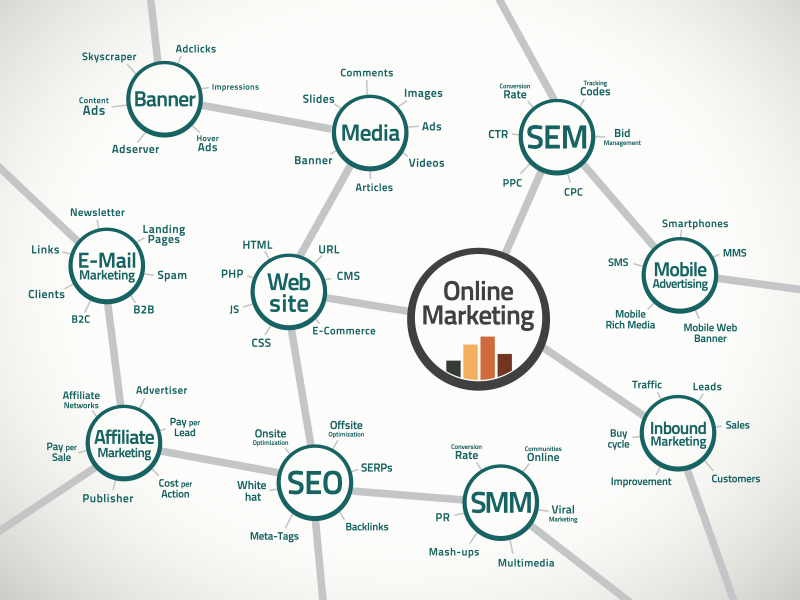
Key steps involved in building a strong foundation for digital marketing, real estate businesses can effectively reach their target audience, generate leads, and achieve a high return on investment (ROI).
1. Define your target audience and buyer personas:

Before launching any digital marketing campaign, it’s crucial to clearly define your target audience. Ask yourself questions like:
> Who are your ideal buyers?
> What are their demographics (age, location, income)?
> What are their interests and preferences?
By understanding your audience, you can tailor your marketing efforts to resonate with them effectively.
Example: Let’s say you specialize in luxury beachfront properties. Your target audience may consist of affluent individuals aged 40-60, who enjoy outdoor activities and have a high net worth.
2. Set clear marketing objectives and goals:

Identify what you want to achieve through your digital marketing efforts. Your objectives may include:
> Generating leads
> Increasing website traffic
> Boosting brand awareness
> Ensure that your goals are specific, measurable, achievable, relevant, and time-bound (SMART).
Example: A specific objective could be to generate 50 qualified leads per month through digital marketing channels within the next six months.
3. Choose your best Platforms
Create a plan that outlines the strategies, tactics, and channels you’ll use to reach your target audience. Consider the following elements:
Search engine optimization (SEO): Improve your website’s visibility in search engine results.
Pay-per-click (PPC) advertising: Run targeted ads on search engines or social media platforms.
Social media marketing: Engage with your audience on relevant platforms.
Content marketing: Create valuable content to attract and educate potential buyers.
Email marketing: Build an email list and send personalized campaigns to nurture leads.
Point to remember
To choose your target audience effectively, consider both qualitative and quantitative factors. Look at your existing customer base and conduct surveys or interviews to understand their needs and preferences. Use analytics tools to gain insights into your website visitors and social media followers.
Step-by-Step Guide To Generate Leads Using Google Ads.
Step 1: Define Your Objectives
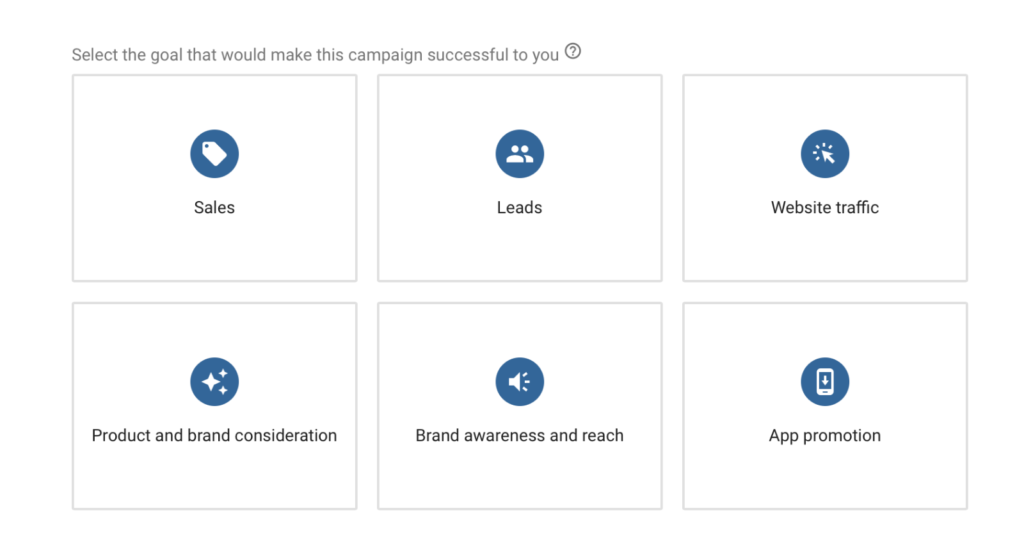
To begin, clearly define your campaign objectives. What do you want to achieve with your Google Ads campaign? Examples of objectives for a real estate company could include:
- Generate leads for a specific type of property (e.g., residential, commercial)
- Increase website traffic to showcase property listings
- Build brand awareness in a particular market or location
Step 2: Identify Your Target Audience
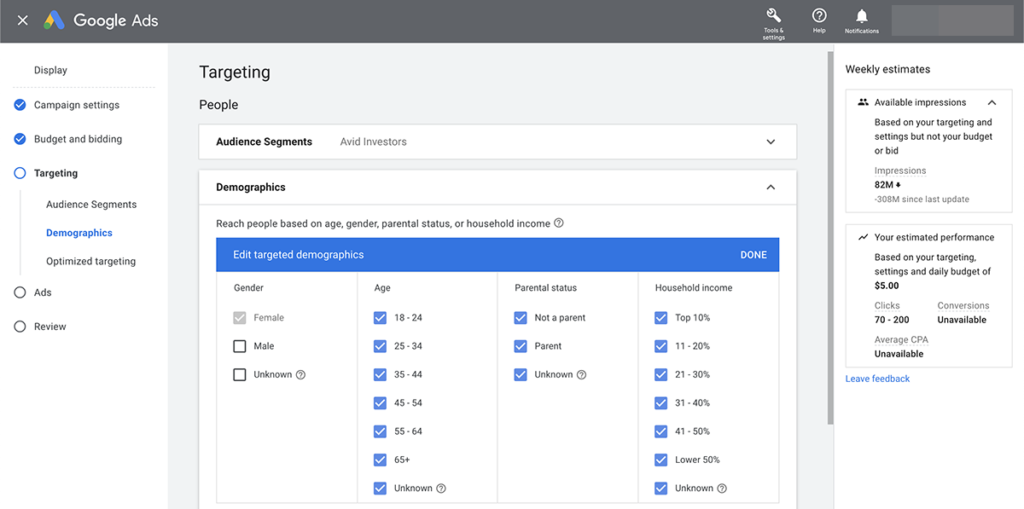
Identify your target audience based on demographics, interests, and behaviors. This will help you tailor your ads and messaging to resonate with your ideal customers.
For example, if you’re targeting first-time homebuyers, consider demographics such as age, income, and location.
Step 3: Keyword Research
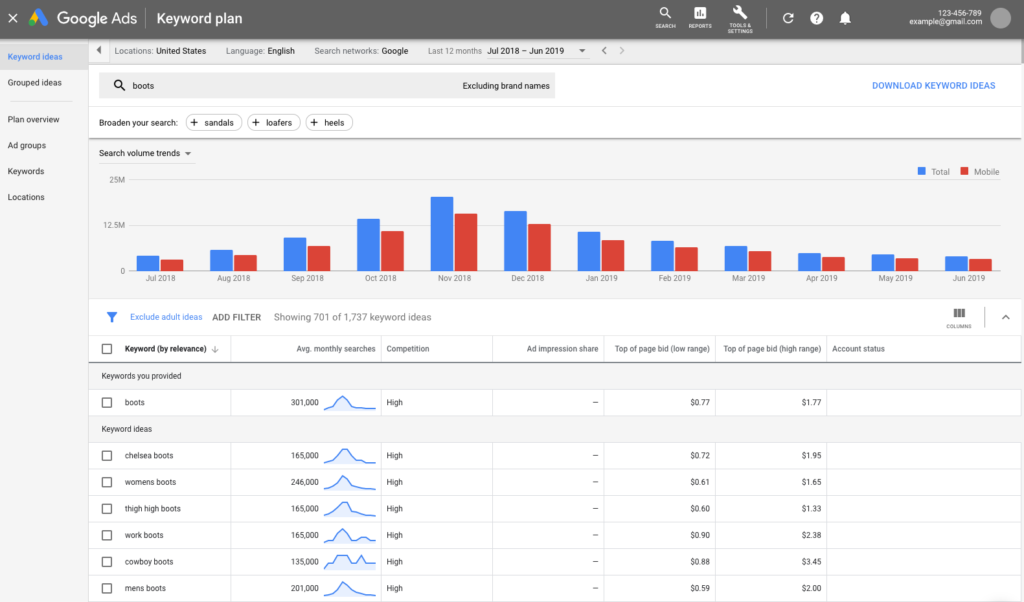
Using tools like Google Keyword Planner, you conduct keyword research to identify relevant search terms. For instance, you discover that keywords like “luxury homes for sale,” “luxury properties,” and “high-end real estate” have significant search volumes. These keywords will form the basis of your ad campaign.
Step-by-Step Guide to Keyword Research for Real Estate Google Ads
Keyword research is a crucial step in creating a successful Google Ads campaign for your real estate business. It helps you identify the relevant search terms that potential customers are using when looking for real estate services. Here’s a step-by-step guide on how to conduct keyword research:
Step 1: Understand Your Business and Offerings
Before diving into keyword research, it’s important to have a clear understanding of your real estate business, the types of properties you offer, and your target audience. Consider the location, property types (residential, commercial, luxury, etc.), and any unique selling points that set you apart from competitors.
Step 2: Brainstorm Seed Keywords
Start by brainstorming a list of seed keywords related to your business and offerings. These are general terms that describe your services, such as “real estate,” “homes for sale,” or “property listings.” These seed keywords will form the foundation for further keyword research.
Step 3: Use Keyword Research Tools
Utilize keyword research tools like Google Keyword Planner, SEMrush, or Ahrefs to expand your keyword list. Let’s take Google Keyword Planner as an example:
a) Access Google Keyword Planner:
Go to the Google Ads website and sign in to your account.
Click on “Tools & Settings” in the top right corner.
Under “Planning,” select “Keyword Planner.”
b) Enter Seed Keywords:
Enter your seed keywords in the “Discover new keywords” section.
Adjust the targeting options, including location and language, to focus on your target audience.
c) Review Keyword Ideas:
Explore the list of keyword ideas generated by the tool.
Look for keywords with high search volume and relevance to your real estate business.
Pay attention to long-tail keywords (more specific phrases) that indicate user intent, such as “luxury homes for sale in [city].”
Step 4: Analyze Competitor Websites
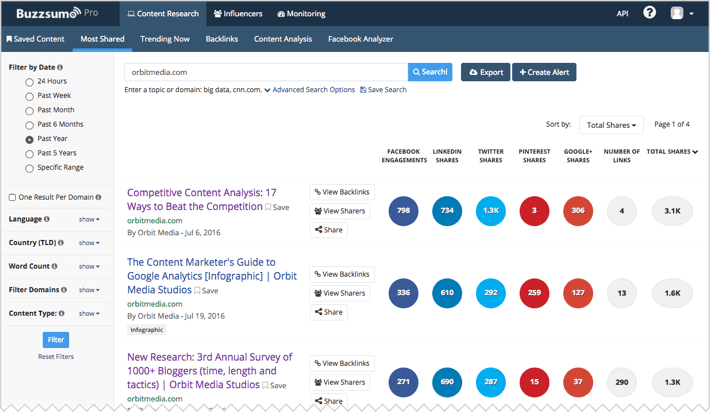
Visit competitor websites, especially those ranking well in search engine results, to gain insight into the keywords they are targeting. Observe the terminology and phrases used in their property descriptions, headlines, and meta tags. This can give you additional keyword ideas and help you identify gaps in your keyword strategy.
Step 5: Focus on Local Keywords
Real estate is often location-specific, so it’s important to include local keywords in your research. Add the name of your target city or region to your keywords. For example, if you’re targeting buyers in Mumbai, include keywords like Mumbai homes for sale,” “real estate agents in Mumbai,” or “properties in Mumbai.”
Step 6: Long-Tail Keywords
Consider incorporating long-tail keywords into your research. Long-tail keywords are more specific phrases that typically have lower search volume but higher intent. For example, instead of targeting the broad keyword “homes for sale,” you could focus on long-tail keywords like “3-bedroom homes for sale in Mumbai” or “waterfront properties for sale in Mumbai.”
Step 7: Competitive Analysis
Analyze the keywords your competitors are targeting. This can give you insights into potential gaps or opportunities in the market. Tools like SEMrush or SpyFu can help you identify the keywords your competitors are ranking for and their estimated search volumes.
Step 7: Negative Keywords
Identify negative keywords – terms that are not relevant to your business or may attract irrelevant traffic. For example, if you’re selling luxury homes, you may want to exclude keywords like “affordable homes” or “low-cost housing” to ensure your ads are shown to the right audience.
Step 8: Refine and Organize Your Keyword List
Refine your keyword list based on search volume, competition, and relevance to your real estate business. Remove keywords that are too broad, have low search volume, or are not directly related to your offerings. Organize your keywords into relevant groups or themes to help you better structure your ad campaigns.
Step 04: Set up your Target Demographics
Consider factors such as age, gender, income level, and location. For example, you may target individuals aged 25-40, both male and female, with an annual income of $100,000 or more, residing in a specific city or neighborhood.
Step 5: Define a Landing Page
Choose a dedicated landing page that aligns with the specific ad group. This landing page should provide detailed information about the luxury residential properties you’re advertising. Include high-quality images, virtual tours, and compelling descriptions to engage users and encourage them to take the desired action, such as submitting a contact form or scheduling a property viewing.
Step 6: Set Set Bids and Budget for Google ads :
Setting bids and budgets for your Google Ads campaign involves careful planning and consideration of your advertising goals and financial resources. Here’s a step-by-step explanation of how to calculate your bids and budget:
After Determining your campaign objectives & Target audiance you next step is Setting bids and a budget for your Google Ads campaign.
01 – Calculate your maximum cost per click (CPC): Your maximum CPC represents the highest amount you’re willing to pay for a single click on your ad. To calculate your maximum CPC, consider your profit margins, conversion rates, and the lifetime value of a customer. Here’s an example calculation:
Let’s assume:
You have a profit margin of $500 for each conversion.
Your conversion rate is 5% (5% of ad clicks result in a conversion).
The lifetime value of a customer is $2,000.
Calculation:
Maximum CPC = (Profit margin × Conversion rate) ÷ Lifetime value of a customer
= ($500 × 0.05) ÷ $2,000
= $0.0125
Your maximum CPC would be $0.0125 (or $0.01 rounded to the nearest cent).
02 – Determine your daily budget: Your daily budget is the maximum amount you’re willing to spend on advertising per day. To calculate your daily budget, consider factors such as your overall marketing budget, campaign duration, and the estimated cost per click (CPC). Here’s an example calculation:
Let’s assume:
You have a monthly marketing budget of $5,000.
Your campaign will run for 30 days.
The estimated CPC for your keywords is $2.
Calculation:
Daily budget = (Monthly budget ÷ Campaign duration in days)
= ($5,000 ÷ 30)
= $166.67
Your daily budget would be approximately $166.67.
03 – Optimize your bidding strategy: Google Ads provides various bidding strategies, such as manual CPC, target CPA, or target ROAS (return on ad spend). Experiment with different bidding strategies to find the one that aligns with your campaign goals and delivers the best results.
Step 7: Craft Compelling Ad Copy
You create engaging ad copy that highlights the unique selling points of your luxury properties.
For example, your ad copy could emphasize features such as breathtaking views, state-of-the-art amenities, and exclusive gated communities. The language used is tailored to appeal to the target audience, evoking a sense of prestige and elegance.
Example:
Test Copy 1: “Luxury Living Redefined – Discover Unmatched Elegance and Opulence Today.”
Test Copy 2: “Find Your Paradise – Explore our Exclusive Collection of Luxury Homes with Private Beach Access.”
Step 10: Test and Scale
To optimize your campaign further, you conduct A/B testing. You create multiple ad variations with different headlines, copy, or images and test them against each other. By analyzing the results, you identify the most effective ad variations and allocate more budget to scale those successful ads.
Important KPIs to Monitor
When running Google Ads campaigns for real estate, it’s essential to track key performance indicators (KPIs) to measure the effectiveness and success of your campaigns. Here are some important KPIs to consider:
- Click-through Rate (CTR): CTR measures the percentage of people who click on your ads after seeing them. A high CTR indicates that your ad copy and messaging are compelling and relevant to your target audience.
- Conversion Rate: The conversion rate tracks the percentage of users who take the desired action on your website after clicking on your ads.
For real estate campaigns, conversions can include submitting a contact form, requesting a property tour, or signing up for a newsletter. A higher conversion rate indicates that your landing pages and website are effectively driving user engagement and lead generation.
- Cost per Click (CPC): CPC represents the average amount you pay for each click on your ads. It is essential to manage your CPC to ensure that you’re maximizing your budget and achieving a reasonable cost per lead.
- Cost per Conversion (CPA): CPA calculates the average cost you incur to acquire a conversion or lead. This metric helps you understand the efficiency of your ad spend and determine the profitability of your campaigns. Lowering your CPA indicates that you are acquiring leads at a lower cost, which is beneficial for your business.
- Return on Ad Spend (ROAS): ROAS measures the revenue generated compared to the cost of advertising.
It indicates the effectiveness of your campaigns in driving revenue for your real estate business.
A higher ROAS indicates that your advertising efforts are generating a positive return on investment.
- Impressions: Impressions represent the number of times your ads are shown to users. Tracking impressions can help you understand the reach and visibility of your campaigns.
If you notice a low impression count, you may need to optimize your targeting or adjust your bidding strategy to increase exposure.
- Quality Score: Quality Score is a metric used by Google to assess the relevance and quality of your ads and keywords. A higher Quality Score can lead to lower costs and better ad positions.
It’s important to optimize your ads and landing pages to improve your Quality Score and campaign performance.
- Ad Position: Ad position refers to the placement of your ads on the search results page. Higher ad positions typically receive more visibility and clicks.
Monitoring your ad position allows you to assess the competitiveness of your campaigns and make adjustments if needed.
Bottom Line :
By following this step-by-step guide and consistently analyzing and refining your Google Ads campaign, you can generate quality leads for your real estate company and establish a strong online presence within your target market. Remember to tailor your strategies to align with your specific objectives, target audience, and the performance of your campaign to achieve the best possible results.
FAQs


